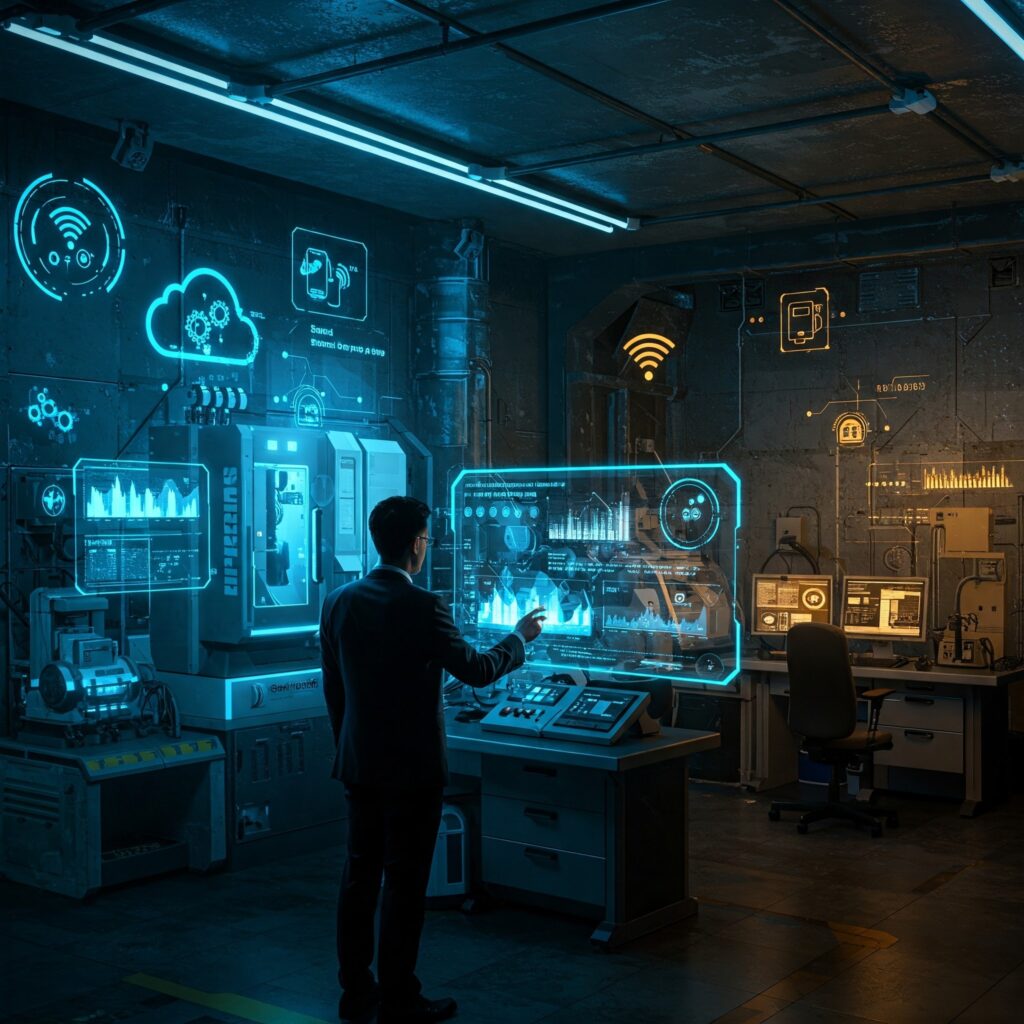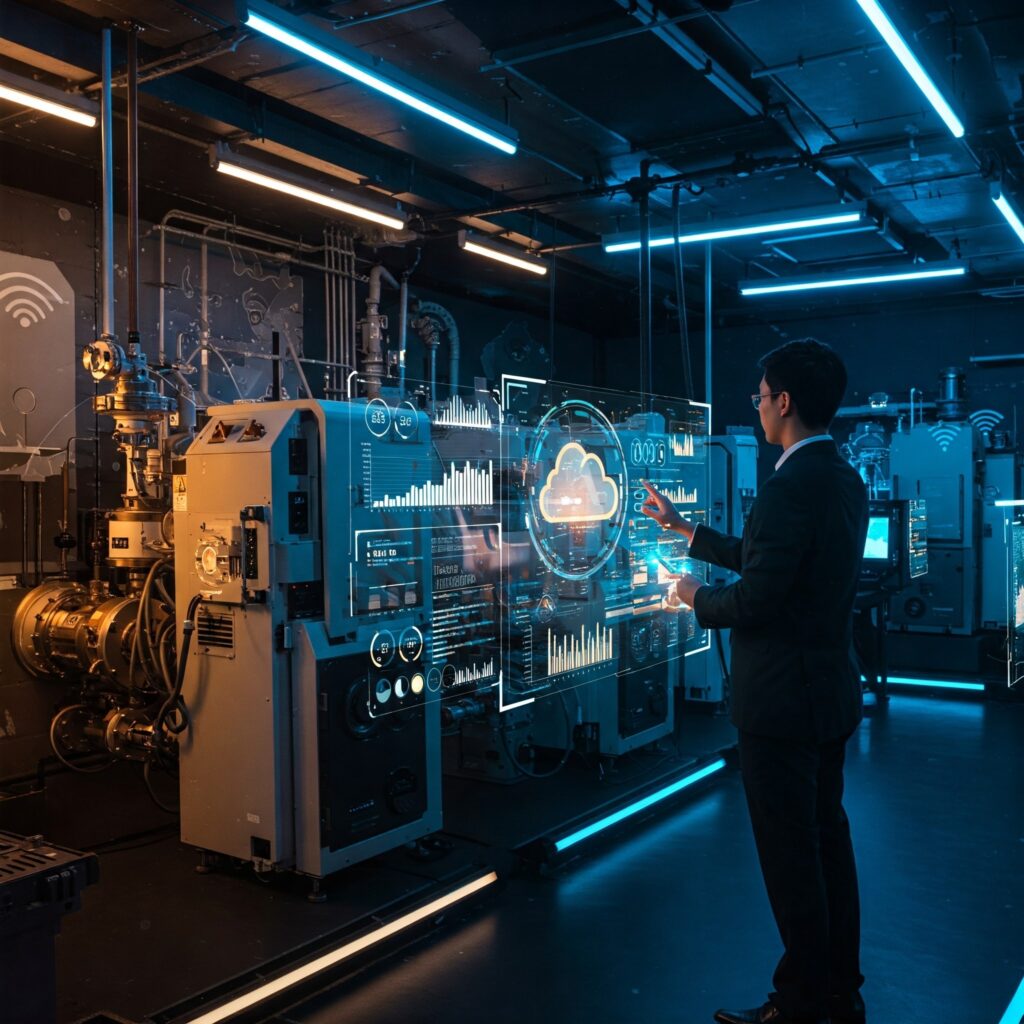Marketing Automation, AI, and IoT: How IoT is Shaping the Future of B2B Marketing Automation

In our continuing exploration of the intersection between Marketing Automation (MA), Artificial Intelligence (AI), and the Internet of Things (IoT), it’s time to turn our focus squarely on the role of IoT.
While AI often takes center stage in marketing innovation conversations, IoT is the silent engine behind much of what modern, intelligent marketing systems can achieve. It’s the force quietly gathering real-world behavioral data, enriching marketing automation platforms, and opening new possibilities for ultra-personalized, timely, and predictive marketing.
In this article, we’ll dive into:
- How IoT devices gather actionable marketing data
- The ways IoT empowers hyper-personalized marketing automation
- Real-world examples of IoT-driven marketing in action
- Opportunities for B2B marketers
- Critical challenges, including privacy risks, marketers must prepare for
How IoT Devices Gather Actionable Data for Marketing
The Internet of Things (IoT) refers to the massive network of interconnected physical devices—such as sensors, smart appliances, industrial equipment, and wearable technology—that continuously collect, transmit, and sometimes act on data.
When most people think of IoT, they picture consumer applications: smartwatches tracking fitness goals, smart fridges suggesting grocery lists, or voice assistants playing curated playlists. In the consumer space, IoT primarily enhances convenience and personal lifestyle choices.
However, in the world of B2B marketing, IoT serves a deeper, more strategic role. It’s not just about convenience—it’s about capturing operational insights, monitoring complex systems, and enabling businesses to make data-driven decisions that influence purchasing cycles, service requirements, and long-term relationships.
Rather than relying solely on digital touchpoints (like clicks, downloads, and form submissions), IoT enables B2B marketers to gain direct visibility into how products and services are being used in real-world business environments.
Types of actionable data IoT devices collect include:
- Usage patterns — Frequency, intensity, and timing of product or service usage
- Performance metrics — Operational data, machine health, user satisfaction levels
- Location data — Where a device is operated, which can suggest geographic preferences
- Environmental factors — Temperature, pressure, occupancy, and other surrounding conditions
- Behavioral triggers — Physical actions that indicate readiness to purchase, renew, or upgrade
By feeding this information into marketing automation systems, companies can create campaigns based not just on who a customer is, but on what they are actually doing—resulting in far more targeted and effective marketing strategies.
The Connection Between IoT and Marketing Automation
Traditional marketing automation workflows revolve around tracking digital behaviors:
- Website visits
- Form completions
- Webinar signups
- Email opens and clicks
With IoT, marketers can now automate responses based on physical-world events—a significant evolution from just digital touchpoints.
Here’s how the connection works:
IoT enables marketing automation to become more dynamic and situational, reacting to the real world as seamlessly as it does to digital interactions. It transforms marketing into an always-on, context-aware engine.
Real-World Examples of IoT-Enabled Marketing Automation
| IoT Action | Marketing Automation Response |
| A smart factory machine signals an upcoming maintenance need | Service offer emails are automatically triggered |
| A smart office building logs reduced energy efficiency | Proactive outreach offering new sustainability solutions |
| A wearable medical device records irregular patient activity | Healthcare provider sends targeted support resources and follow-ups |
| A fleet management IoT platform flags increased vehicle downtime | Automated campaigns offering maintenance packages or vehicle upgrades |
1. Smart Home Devices and Product Recommendations
Smart devices are excellent at capturing day-to-day living habits. For instance, smart refrigerators can detect when groceries are running low, and based on that data, retailers can send:
- Targeted replenishment reminders
- Customized shopping lists
- Discount offers based on past purchases
Similarly, smart thermostats that track seasonal usage patterns can prompt energy companies to recommend maintenance services or promote new eco-friendly plans precisely when customers start adjusting their settings.
2. Industrial IoT (IIoT) for B2B Equipment Maintenance
In sectors like manufacturing, energy, and logistics, the stakes are even higher.
- Industrial sensors can monitor equipment performance and predict wear and tear.
- Instead of waiting for breakdowns, businesses can proactively market maintenance packages, sell extended warranties, or offer trade-in deals based on live equipment health.
Result:
Marketers no longer need to guess when customers might need help—they can offer solutions at exactly the right time, improving customer satisfaction and increasing upsells.
3. Automotive IoT and Predictive Engagement
Modern vehicles act as mobile IoT hubs, tracking tire wear, battery health, and driving behavior.
- Dealerships and manufacturers can automate personalized service reminders based on actual usage instead of generic timelines.
- Insurance companies can tailor rates or incentives based on safe driving habits collected through IoT telematics.
Outcome:
This real-world data creates an ongoing customer relationship, moving beyond initial purchase into the long-term lifecycle of retention, loyalty, and cross-sell opportunities.

Opportunities for B2B Marketers Leveraging IoT and MA
B2B marketers who embrace IoT have a powerful set of new opportunities to explore:
1. Hyper-Personalization at Scale
IoT allows marketing teams to build messaging that mirrors the customer’s reality, not just assumed pain points.
For example:
- A software provider could monitor actual usage levels of their SaaS product and offer additional training or upsell add-ons if engagement drops or usage plateaus.
- A manufacturer could notice heavy use of a specific machine feature and promote advanced feature packages based on that trend.
This kind of responsive personalization is far more persuasive than traditional one-size-fits-all campaigns.
2. Predictive Engagement
IoT enables moving from reactive to proactive marketing:
- Predict a need before it arises.
- Offer upgrades before systems become outdated.
- Provide service options before issues disrupt operations.
Being one step ahead builds trust, boosts customer satisfaction, and cements loyalty.
3. Real-Time Personalization Across Channels
Using IoT data, marketers can synchronize personalized engagement across email, ads, SMS, mobile apps, and even physical mail:
- If a smart device detects an issue, marketing can deploy a coordinated cross-channel response—email the customer, display retargeted ads, and update CRM workflows instantly.
- No channel exists in isolation anymore; IoT fuels a true multi-channel experience, keeping brands top of mind wherever the customer moves.
Challenges and Risks: Where IoT + MA Get Complicated
While the potential is massive, marketers must also navigate complex challenges:
1. Data Overload
The flood of raw data generated by IoT devices can overwhelm traditional systems. Without advanced filtering and analysis, marketers risk making decisions based on incomplete or irrelevant signals.
Solution: Implement AI-powered analytics and machine learning models that surface only high-priority insights tied to marketing goals.
2. Integration Complexity
Different IoT systems often use different standards and protocols, complicating efforts to consolidate data streams into a cohesive marketing automation environment.
Solution: Choose platforms with strong IoT integration capabilities, APIs, and connectors—or partner with integration specialists who can streamline data workflows.
3. Privacy and Ethical Considerations
IoT data often includes extremely personal and sensitive information—from physical locations to health indicators.
Key Considerations:
- Always obtain explicit consent for data usage.
- Offer opt-outs and clear communication about how data will be used.
- Stay compliant with data privacy laws like GDPR, CCPA, and any industry-specific regulations.
- Employ end-to-end encryption and secure storage practices.
Trust is easy to lose and hard to regain—particularly in an era of rising consumer awareness around digital rights.
The Future: Smarter, More Connected Marketing Automation
Looking ahead, IoT’s role in marketing automation will deepen in profound ways:
- Real-time marketing orchestration—campaigns that react instantly to sensor data.
- Environmental-responsive campaigns—offers that change based on weather, location, or product conditions detected through IoT.
- Automated lifecycle marketing—servicing, upgrading, or renewing automatically based on product usage and wear patterns.
As IoT devices proliferate across industries, B2B marketing will become less about chasing leads and more about intelligently nurturing relationships over time.
Marketing will stop being episodic—it will become an always-on, evolving conversation between brands and customers, driven by real behavior, not assumptions.
Final Thoughts
IoT isn’t just connecting devices—it’s connecting marketers with customers in ways that were once unimaginable.
By bridging the physical and digital worlds, IoT empowers marketing automation platforms to deliver hyper-personalized, predictive, and multi-channel experiences that resonate deeply.
However, as we move into this next frontier, marketers must balance innovation with responsibility—ensuring that data is used ethically, securely, and always with the customer’s trust in mind. For those who master this balance, the future of marketing automation powered by IoT offers an unparalleled opportunity to drive growth, deepen loyalty, and stay ahead of the competition.
While IoT applications are common in consumer spaces—like smart home devices or wearable tech—their role in B2B marketing is distinct. Consumer IoT often focuses on convenience and lifestyle personalization, whereas B2B IoT captures deeper operational and usage data across complex systems. This makes the insights more strategic, supporting longer sales cycles and more specialized outreach.